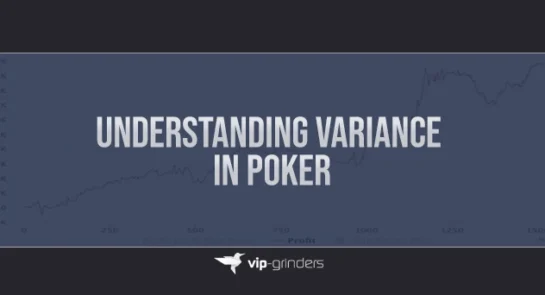No-Limit Hold’em Cash Game Strategy: Grinding and Winning
Cash games reward long-term profitable choices: accurate preflop ranges, superior postflop decision-making, smart stack-size planning, table selection, and mental discipline. This strategy guide combines solver-aware theory, real-world televised cash-game hand studies, and proven advice from trusted experts so you can apply what pros do to your game.
Key Differences: Cash Games vs Tournaments
I can speak from experience, when I say that the transition from texas hold’em tournament poker to cash games, can be a quick learning curve. Having a grasp of the key differences between cash games and tournaments is crucial before diving into real money cash games.
3 Expert Principles to Anchor Your Play
- 1Position matters: Dan Harrington emphasizes position as a primary factor in decision-making; play tighter early and wider late. Position play is as vital in cash games as in tournaments.
- 2Tight-aggressive default: Raise your strong hands and avoid limp-first-in. Upswing & other coaches stress aggression and selectivity.
- 3Adjust to opponents: Use GTO as baseline; deviate exploitatively when the pool leaks (over-folding, calling stations). (See Tools & Solver section.)
Preflop: Practical Cash-Game Rules
Preflop decisions lay the foundation for winning cash game play. Proper open-raise sizing balances fold equity and pot control—online standards hover around 2.25–3× the big blind, while live play often demands slightly larger opens (3–4×) due to dead money and straddles.
Understanding when and how widely to steal from the button, mix polarized 3-bet ranges, and defend blinds effectively against different opponent types is critical for consistent profitability.
- 1Open-raise sizing: 2.25–3× the big blind standard online; adjust upward live (3–4×) depending on dead money and straddles. (Smaller opens increase steal frequency; larger opens make postflop decisions clearer.)
- 2Button steals: Raise very wide from the button; the math often allows profitable steals even with marginal holdings when blinds are tight.
- 33-bet strategy: Polarize vs. value depending on opponent; mix bluffs (blocker hands, suited aces) with value. Against calling stations, reduce bluff frequency.
- 4Defending blinds: Defend widely from BB vs single late raises (30–40%+), but tighten vs multiway pots and early-position raises.
Postflop Play: Street-by-Street Framework
Flop: Ranges, Board Texture, and SPR
The flop is the most crucial street where much of the hand’s story unfolds. Start by classifying the board texture to gauge how well your raising range connects compared to your opponent’s calling range.
Dry boards (e.g., K♠7♦2♣ rainbow) feature disconnected cards that hit fewer drawing hands. On these boards, continuation bets (c-bets) can be smaller and more frequent because many opponents miss and fold.
Wet boards (e.g., J♦T♦9♠ two-suited) are coordinated with multiple straight and flush draws. When out of position (OOP), proceed cautiously since opponents often have strong draw possibilities and can apply pressure.
Paired boards add complexity by enabling full houses and trips. Betting patterns here require precise range reading and caution.
The Stack-to-Pot Ratio (SPR) heavily influences your approach. Low SPRs (around 3 or less) favor simpler, value-focused lines because large bets or all-ins become more common.
High SPRs give speculative hands like suited connectors room to maneuver and exploit implied odds through multi-street play.
C-bet frequency should be balanced. On flops that favor your raising range, c-bet aggressively, mixing in bluffs and value. On boards favoring your opponent’s range, incorporate more checking—either to call or fold—avoiding over-commitment on dangerous textures.
Turn: Build the Pot or Control It
The turn is a pivotal betting street where the pot size usually grows significantly, and decisions become more consequential. Knowing when to barrel aggressively or when to control the pot size often dictates your long-term success.
When to Barrel: Fire a turn bet if the card increases your fold equity or improves your hand equity—such as completing a flush or straight draw. A well-timed barrel can force opponents off better hands or induce folds from weaker holdings.
Conversely, if the turn card gives your opponent more equity (e.g., adding potential draws) or if you’re in position holding a marginal made hand, pot control through checking or smaller bets may be wiser to avoid bloating the pot unnecessarily.
Sizing Considerations: Turn bet sizing should reflect your strategic objectives. Larger bets are used when representing narrow strong ranges, helping to polarize your betting range and setting up tough decisions on the river for your opponents.
Smaller turn bets usually indicate a mixed strategy with bluffs and value, allowing flexibility and disguising hand strength.
River: Value Extraction vs Bluff Frequency
The river is the final betting round where all cards are revealed, and value extraction takes center stage. A key strategic question to ask yourself is always: “What hands will my opponent call me with?”
If your bet reaches many worse hands—second pairs, weak top pairs, or missed draws—lean toward betting for value to maximize profit. Conversely, if your opponent will only call with stronger holdings, checking or folding is often correct.
In cash games with deep stacks, thin value bets become incredibly important. Opponents tend to call more liberally with worse hands than in tournaments because there’s no payout ladder distorting their decisions like ICM.
Balancing your bluff-to-value ratios is crucial to stay unexploitable. Solvers provide spot-specific guidance, but a common heuristic is to maintain bluffs at roughly one-third of your value bets on pot-sized river bets. Over-bluffing invites more calls; under-bluffing causes folding and missed value.
3 Advanced Cash Game Concepts: Pro-Level Decisions
- 1Stack-to-Pot Ratio (SPR): Interpret SPR before flop: Decide whether your plan is to go all-in by river (commitment) or leave room for multi-street play.
- 2Polarized vs Merged Ranges: Use polarized lines when you want to represent a narrow set of nuts (e.g., overbet) — bluffs + nuts — and merged lines when your range is mostly medium strength (small bets/value blends). Modern solvers show optimal mixes but adapt to the pool’s tendencies.
- 3Blockers & Card Removal: Blockers matter: Holding A♠5♠ 3-bets as a semi-bluff frequently because you block A-K/AA combos — reducing opponent’s premium holdings — and you have fold equity and redraws.
To understand more advanced Hold’em strategy, read our Advanced Texas Hold’em strategy guide.
No Limit Cash Game Tools & How Top Pros Study
Modern cash game players rely heavily on sophisticated tools to refine their strategy and stay ahead of tough competition. Among these, solvers like GTO+ and PioSolver are indispensable.
Databases and HUDs such as PokerTracker and Hand2Note track detailed opponent statistics—3-bet ranges, fold-to-c-bet tendencies, and river call frequencies—which allow serious players to exploitable tendencies dynamically.
Big winners often excel at filtering and interpreting this data to adjust preflop and postflop strategy in real time.
| Topic | Micro / Small Stakes | Mid Stakes | High Stakes / Live Streams |
|---|---|---|---|
| Pool tendencies | Calling stations; overcall on rivers | More balanced; tougher to exploit | Highly skilled regs + gamblers; big pots |
| Preflop ranges | Tighten for rake; avoid limp pots | Use mixed ranges; widen BTN steals | Wide BTN opens; big 3-bets and isolated pots |
| Postflop play | Bet thin value more; fewer bluffs | Balanced mix; use sizing to get calls | Exploit players, larger bet sizes, blocker-driven plays |
| Table selection | Crucial: look for fish | Important: avoid juiced games | Game selection matters for variance |
Real-World Hand Studies from Televised Cash Games
Hustler Casino Live — Mariano’s Three-Way A♦A♣ vs K♠K♥ vs K♦K♦
Why This Hand Matters: This hand exemplifies multiway cold-equity dynamics and how deep stacks create huge cooler scenarios. When multiple players expand preflop calling ranges—as often seen in live streams—so-called “coin flips” can balloon into six-figure pots.
Strategic Concept Illustrated: It highlights the risk of overcalling preflop with vulnerable hands that block thin value realization and illustrates why protecting your stack with 3-bet-fold lines against multiway callers is crucial.
Takeaway: In high-variance live cash games, manage stack risk carefully by considering 3-bet-fold over passive calls to avoid catastrophic cooler pots.
The Lodge Poker — ‘Action Dan’ Massive Pot ($493,400) Hand
Why This Hand Matters: This prolonged betting battle showcases the power of manipulating SPR and leverage through multi-street aggression. Pros use variable bet sizing across streets to force folds or extract thin value, particularly by carefully sizing turns and rivers when deep stacked.
Strategic Concept Illustrated: Effective turn and river sizing to maintain range advantage and pressure opponents into costly mistakes.
Takeaway: Leverage smaller, consistent bet sizing on earlier streets to build pots profitably while setting up optimal decisions and larger bets on later streets.
Worked Hands: Practical Cash Game Examples
Worked Hand 1: Deep-Stack C-bet and SPR Control ($1/$2 – $25/$50)
Hero (BTN) holds: 9♣9♦
Preflop: BTN opens 2.5bb; SB calls; BB folds. Pot: 6.5bb
Flop: Q♠7♠2♦
SB checks; Hero c-bets 2.25bb (~1/3 pot)
SB calls
Why: Small c-bet denies equity to backdoor spade draws, avoids bloating pot unnecessarily, and keeps weaker hands and draws in.
Turn: T♠
SB bets 6bb; Hero calls
Why: Hero calls with a set-mining plan, but remains cautious about the backdoor flush potential.
River: 2♥
SB shoves all-in; Hero folds
Why: SB’s polarized line suggests a range of full houses, sets, and bluffs. Given Villain’s range and bet sizing, folding is justified given risk of facing committed value hands.
Strategic Lesson: Use small flop c-bets with medium pocket pairs to control pot size and restrict opponent equity. Be ready to fold big river bets if opponent polarizes range and your reads support committed value. This reflects common live cash game dynamics where deep stacks and multiple callers create gigantic cooler pots.
Worked Hand 2: Short-Stack Shove Pressure (~15–25bb Effective)
Hero (BB) holds: A♦9♦
Stacks: 20bb effective
Preflop:
- UTG opens 3bb; CO limps; SB calls
- Hero shoves all-in for 20bb
- UTG folds; CO folds; SB folds
- Hero wins blinds uncontested
Strategic Lesson: When effective stacks are ~20 big blinds, preflop shoving maximizes fold equity and chip accumulation against typical opening ranges. Especially in live cash games with straddles or compressed buy-ins, push/fold knowledge is crucial for short-stack play leveraging fold equity.
These two hands illustrate core cash game concepts: controlling pot size and implied odds with deeper stacks vs. pressure-maximizing short-stack shove tactics. Both are essential tools for serious cash game players.
Quick Cash Game Strategy Decision Cheat Sheet:
| Decision Point | Key Questions / Checks |
|---|---|
| Preflop | Consider your position, stack size, and villain type. Decide whether to call, raise, 3-bet, or shove based on these factors. |
| Flop | Who holds the range advantage? What is the stack-to-pot ratio (SPR)? Which cards are optimal for barreling (continuing strong aggression)? |
| Turn | Does betting increase fold equity? Could betting commit you to unfavorable rivers? Adjust bet sizing to maximize value or control pot size. |
| River | Who is likely to call with worse hands? Is your betting line balanced between bluffs and value bets for unexploitable play? |
| Session | Are you selecting the right tables and seats? Are you respecting stop-loss limits to protect your bankroll? |
Three Pillars of NL Hold’em Cash Games:
- 1Bankroll Management: For cash games, a conservative, time-tested rule is to maintain 30 to 50 buy-ins at your chosen stake level. This buffer absorbs the inevitable downswings and variance, protecting your session longevity and emotional stability.
- 2Tilt Control & Endurance: Cash game grinders face long sessions demanding sustained focus and emotional control. Pro players schedule regular breaks, set stop-loss limits, and prioritize physical health—quality sleep, hydration, and nutrition—to maintain peak decision-making.
- 3Table & Opponent Selection: Perhaps the single most impactful factor on cash game profitability is your choice of table. Seek out spots rich in recreational players and casual gamblers, while steering clear of sticky, aggressive regulars who minimize exploitable edges.
Maintaining discipline across these three pillars—bankroll, mindset, and game quality—creates the foundation for consistent cash game success.
AI Summary: TL;DR: No-Limit Hold’em Cash Game Strategy 2025
Use the stack-to-pot ratio (SPR) to inform bet sizing and strategic commitment throughout multi-street action. Value extraction and balanced bluffing on the river are essential for maximizing long-term ROI.
Off the table, strict bankroll management, tilt control, and selective table choice—favoring games with recreational players over tough reg regulars—are foundational to sustained profits.
Top pros study with advanced tools like GTO solvers, HUDs, and video hand reviews to continuously refine their edge in an increasingly competitive landscape.
NL Cash Games FAQs
What's the difference from poker cash games and tournaments?
Cash games have static blinds and the ability to buy in or leave anytime, while tournaments increase blinds and have fixed buy-ins.
What is a cash game?
In an NLHE cash game, players buy chips with real money and play for chips that have direct cash value. Unlike tournaments, blind levels stay the same, and players can join or leave anytime.
What are the blind structures?
Blinds are fixed (e.g., $1/$2) and do not increase over time. Some tables allow “straddles,” where a player can double the big blind as a pre-flop raise.
What are buy-in rules?
Typical buy-ins have minimum and maximum amounts, e.g., $60 minimum and $300 maximum for a $1/$2 table. Players cannot remove chips from the table while playing.
How does betting work in NLHE?
Players can bet any amount of their chips at any time (no-limit). Raises must be at least the size of the previous raise or big blind if no raise yet.
What happens if a player is absent?
Absent players are not dealt cards and must pay blinds missed upon returning, but only once per absence.
Can players choose their seats?
If no waiting list, players pick any open seat unless rebalancing by staff is needed.


















